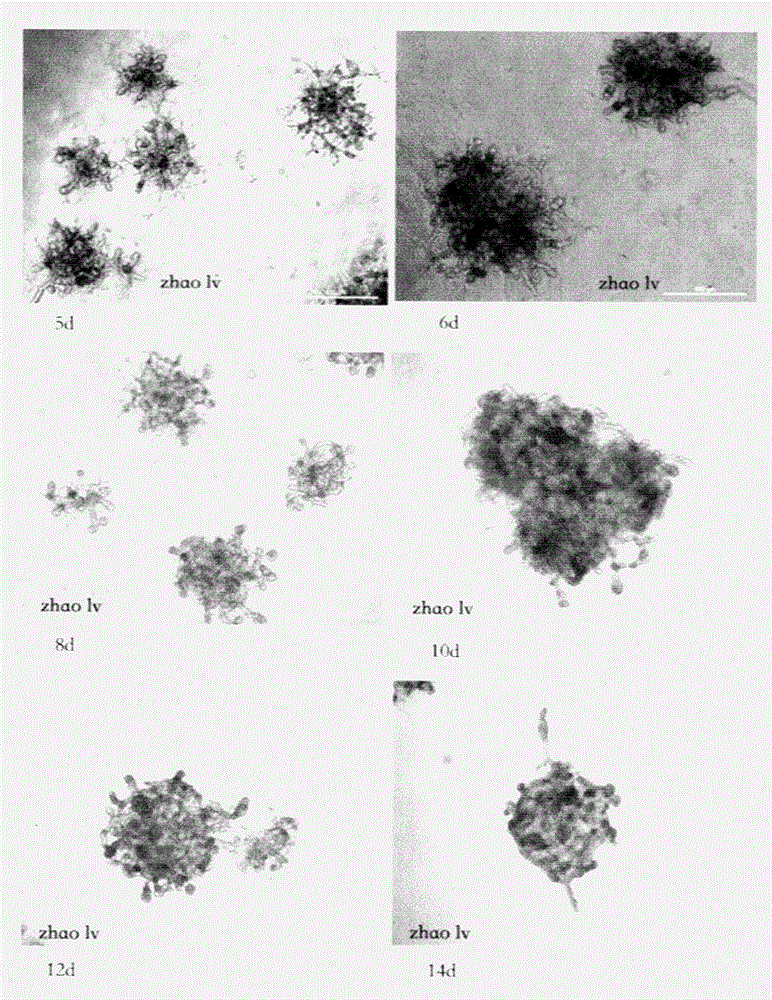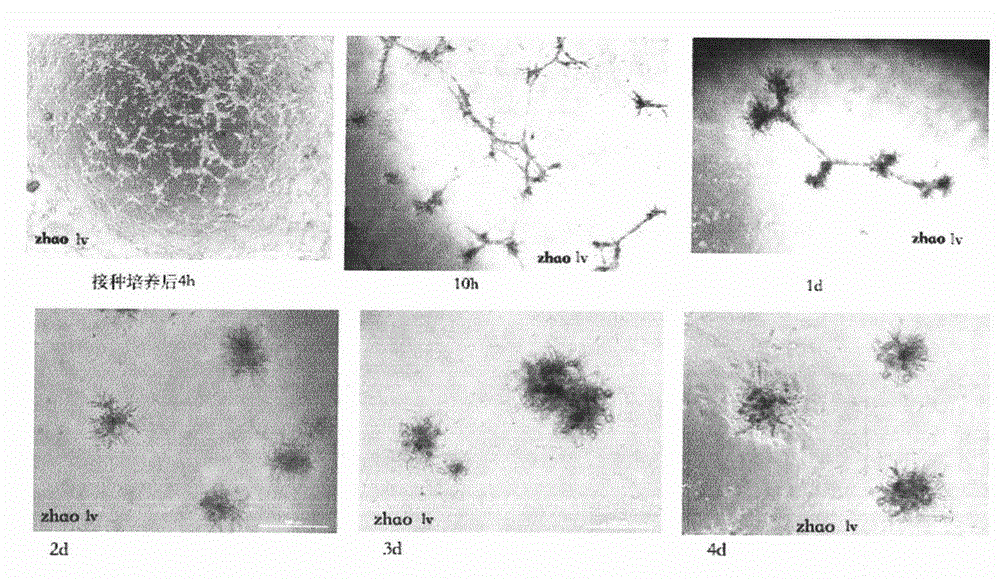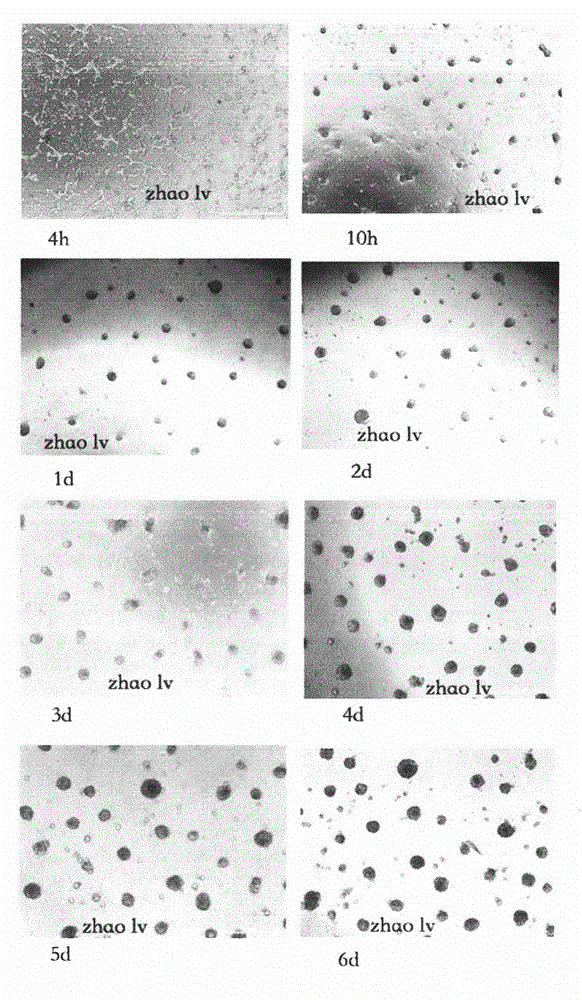In vitro construction method for salivary glands organs and acinus
A construction method and salivary gland technology, which are applied in the field of in vitro construction of salivary gland organoids and acinar-like vesicles to achieve the effects of extensive sources, minimal trauma, and easy excision
- Summary
- Abstract
- Description
- Claims
- Application Information
AI Technical Summary
Problems solved by technology
Method used
Image
Examples
Embodiment 1
[0022] Methods and reagents used in the culture process:
[0023] (1) Culture of primary cells: DMEM / F12 supplemented with 10% fetal bovine serum, 1% double antibody and 1% glutamine;
[0024] (2) In vitro expansion:
[0025] 1) Human minor salivary gland mesenchymal stem cell culture: Mesenchymal stem cell medium: DMEM / F12 supplemented with 5% fetal bovine serum, 1% double antibody, and BSA 10μg / mL, apo-transferrin 10μg / mL, insulin 5mg / mL mL, EGF 2ng / mL, FGF-2 2ng / mL and hydrocortisone 1mg / mL.
[0026] 2) Human minor salivary gland epithelial stem / progenitor cell culture: keratinocyte medium
[0027] DMEM / F12 is supplemented with BSA (bovine serum albumin) 5μg / mL, transferrin (transferrin) 5μg / mL, BPE (bovine pituitary extract) 50μg / mL, insulin (insulin) 3.75g / mL, FGF-2 3ng / mL, EGF 1ng / mL, epinephrine (epinephrine) 500ng / mL, hydrocortisone (hydrocortisone) 0.5g / mL, Prostaglandin E2 (prostaglandin E2) 10 -8 M and T3 30 nM.
[0028] 3) Salivary gland organoid construction...
PUM
 Login to View More
Login to View More Abstract
Description
Claims
Application Information
 Login to View More
Login to View More - R&D
- Intellectual Property
- Life Sciences
- Materials
- Tech Scout
- Unparalleled Data Quality
- Higher Quality Content
- 60% Fewer Hallucinations
Browse by: Latest US Patents, China's latest patents, Technical Efficacy Thesaurus, Application Domain, Technology Topic, Popular Technical Reports.
© 2025 PatSnap. All rights reserved.Legal|Privacy policy|Modern Slavery Act Transparency Statement|Sitemap|About US| Contact US: help@patsnap.com



